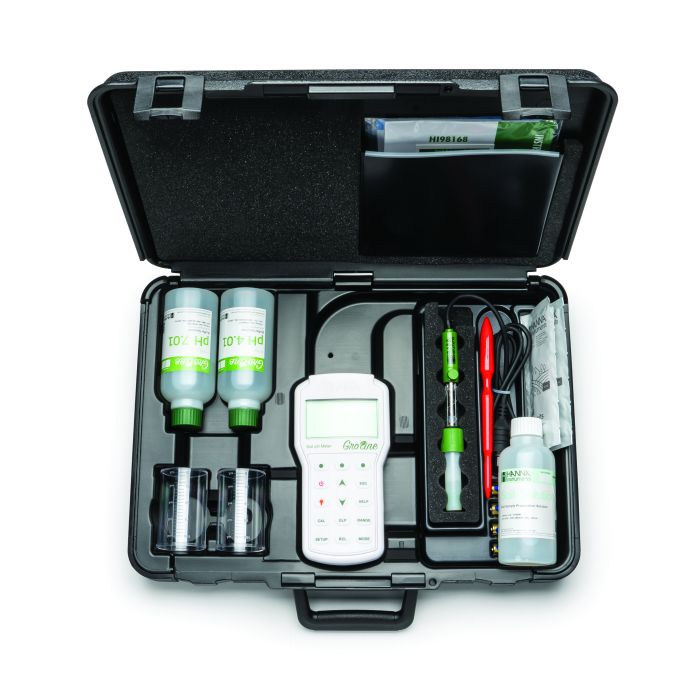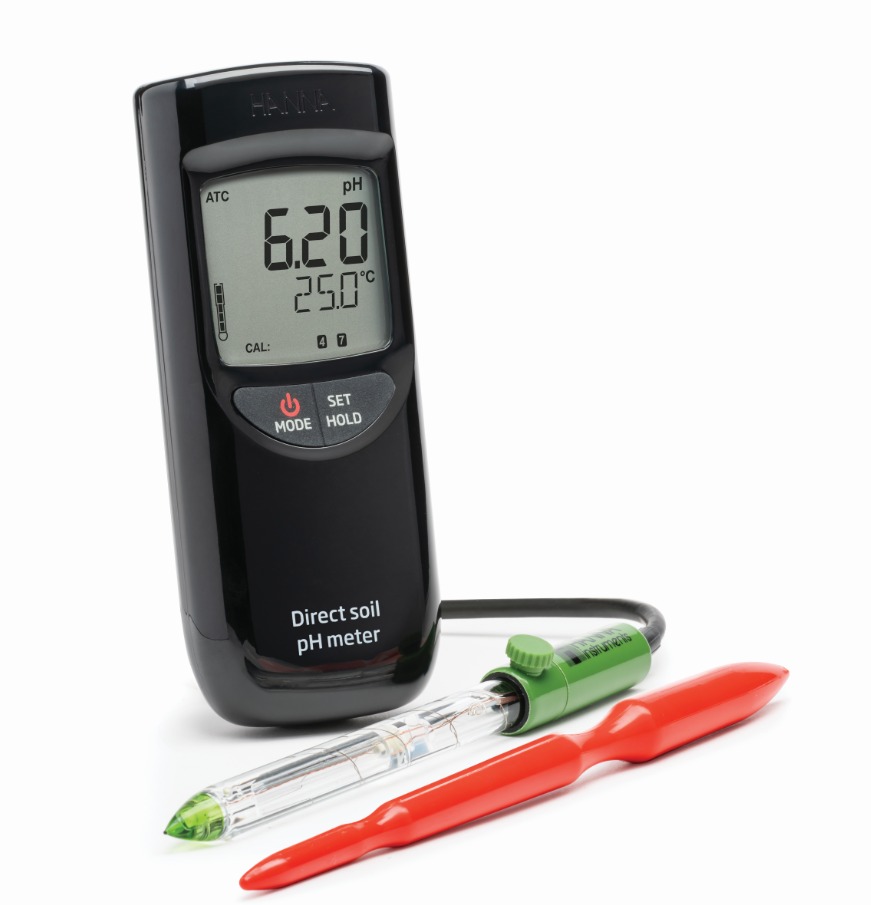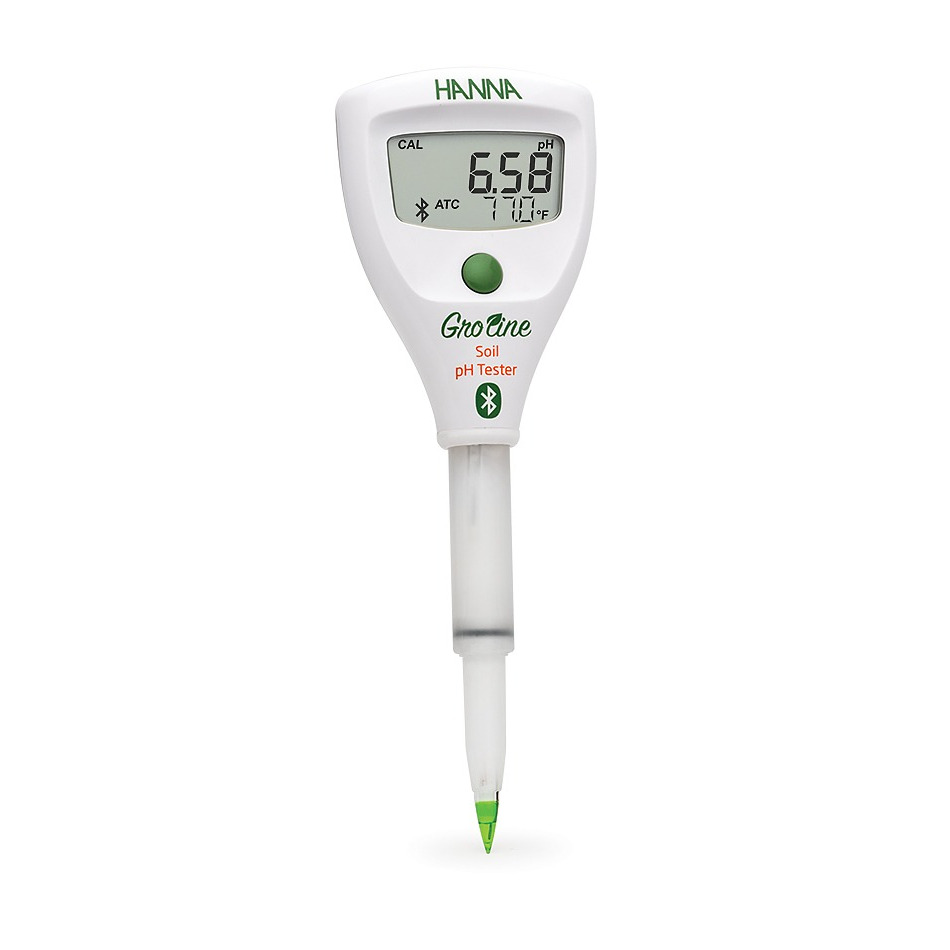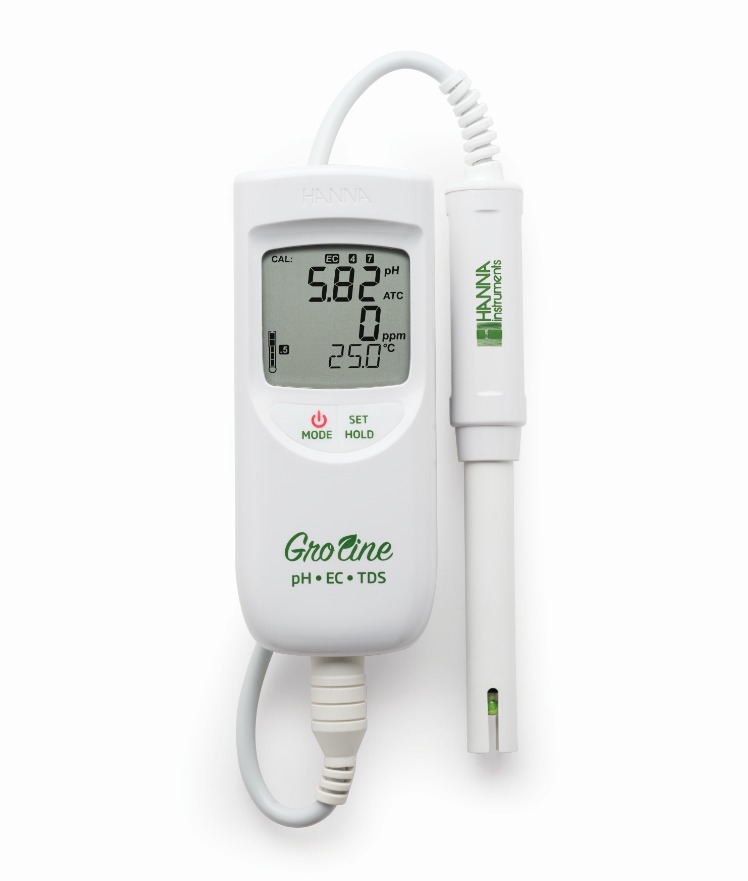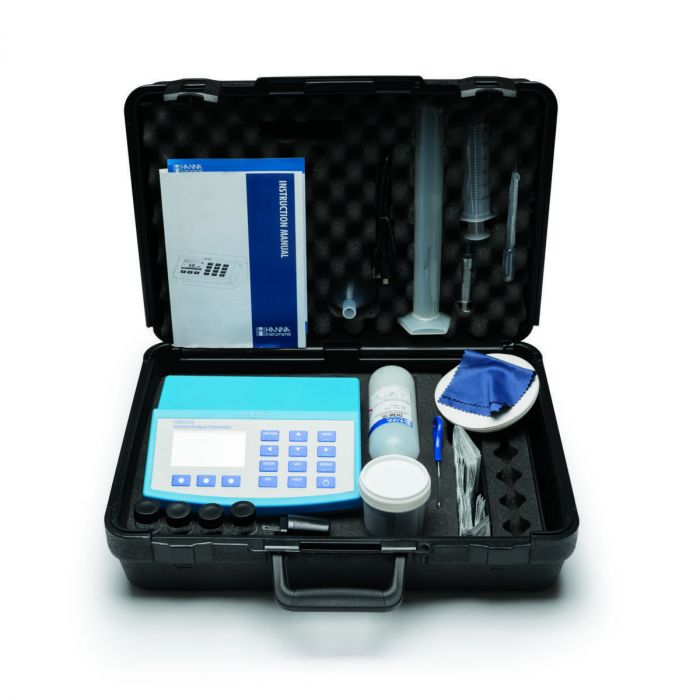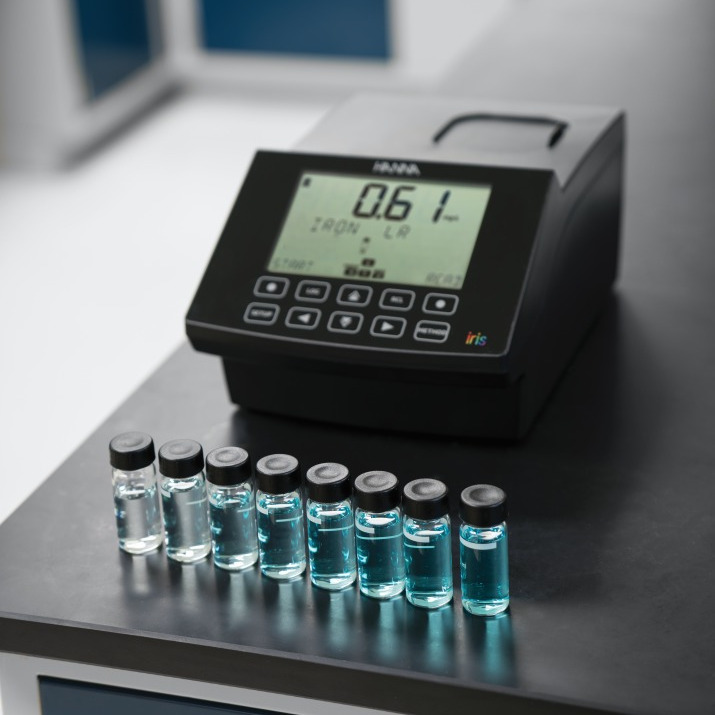The advancement of “soilless culture” has led to the expansion of horticulture in various regions, allowing farmers to achieve high yields and grow top-quality crops, even in challenging environmental conditions.
The initial term used to describe these soilless growing system was “hydroponics”, created by William Frederick Gericke in the 1930s. This term referred to the practice of supplying mineral nutrient solutions (dissolved fertilizers in water) to support plant growth and development without the presence of soil.
Over time, the term was modified to “soilless cultivation” since the media used could be composed of solid or liquid materials, organic or inorganic substrates.
Essentially, the soilless media serves as a substrate within an artificial cultivation system where plants are cultivated without the use of soil.
Basic requirements for a good soilless media growth
If you have made the choice to cultivate using a soilless media, there are some notable differences.
In addition to choosing a good substrate, the expertise and experience of the grower, availability and cost, the soilless substrate must meet the appropriate physical, chemical and biological characteristics. A high yield and good product quality of the crops grown in soilless media is possible only if nutrition/fertigation is optimized.
- Physical aspects include a low bulk density (between 190 to 700 kg/m3), high porosity (between 50% to 85%), particle size between 0.25 to 0.5mm and water retention between 20% to 60%.
- Chemical aspects represented by the CEC (range between 10to 100 me/100g), pH easily adjustable (5 to 6.5), low salt content (0.75 to 1.9 dSm-1) and a C:N ratio between 1:200 to 1:500.
- Biological aspects indicate the healthy condition of the growing medium due to the absence of pathogens and pests, and the absence of toxic compounds.
- Practical aspects such as the capacity of the growing medium to recover from growers’ mistakes, its ability to maintain its original characteristics, and whether it can be produced in uniform batches are relevant in choosing a good soilless growing medium.
Media used for growing must also satisfy the following:
- A uniform texture that drains well but retains nutrients and water for the root system
- Low bulk density that facilitates assembly and transport (between 190 and 700 kg/m3)
- High porosity (between 50% and 85%)
- Particle size distribution to maintain a good balance between air and water retention (between 0.25-0.5 mm)
- pH between 5.0 and 6.5, which can also be easily adjusted
- Low content of soluble salts
- Chemical inertia, which means that the substrate does not affect the nutrient solution by releasing inorganic ions or immobilizing nutrients
- Ability to maintain original characteristics so that it can be used for many consecutive cycles of cultivation
- Absence of pathogens and pests and without any compounds toxic to plants
- The possibility of production in uniform batches (to enable the use of consistent fertilization programs)
- The ability of the substrate to recover from grower mistakes such as overwatering or overfertilization
Chemical Properties Testing with Hanna Instruments:
HI98168
Professional Soil pH Meter Groline
The HI98168 is a durable, waterproof and portable pH meter specifically designed for convenient soil pH measurement.
It comes equipped with a specialized pH electrode featuring a robust conical tip for easy insertion into the soil.
In addition to the dedicated pH electrode for soil analysis, the HI98168 offers Hanna’s unique CAL Check™ feature. This feature plays a vital role during the calibration process by alerting the user to potential issues. Given that the pH electrode is likely to be coated with soil, this is especially important as such coating can lead to inaccuracies in pH measurements.
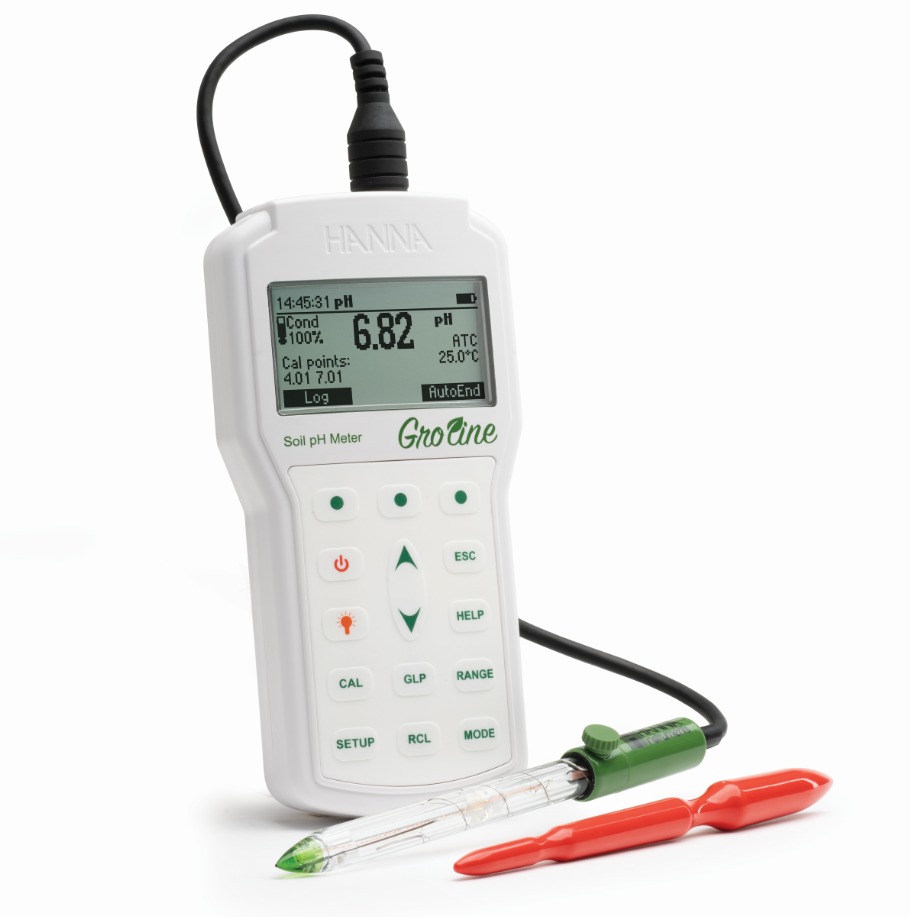

By comparing current calibration data with previous calibration records, the meter provides on-screen prompts to inform the user about the need for probe cleaning, replacement, or potential contamination of the pH buffer solution.
Furthermore, the overall condition of the probe is displayed as a percentage after calibration.
This assessment takes into account both the offset and slope characteristics of the pH electrode.
The GLP data, including readings stored in the meter or transferred to a PC, contains detailed information about these characteristics.
- Quick Connect DIN Connector
- USB Connection for Data Transfer
- Dedicated Help Button
- ±0.002 pH Accuracy
- Comes with all the necessary solutions and batteries – everything you need to get started measuring right away
HI99121
Direct Soil Measurement pH Meter
The HI99121 is the perfect portable Direct Soil Measurement pH Meter.
With the HI99121 and HI1292D direct soil pre-amplified pH and temperature probe, users can test both the pH of soil directly or after preparation of a soil slurry with deionized water.
The HI1292D features a conical, rugged tip that can be directly inserted into moist or soft soil. For harder soils, the kit includes a plastic auger to perforate the ground.
HI981030
Soil pH Tester Groline
The HI981030 GroLine soil pH tester is an application specific designed pH tester for the measurement of soil pH.
This meter offers many advanced features including the ability to clear any clogging of the reference junction, which results in a longer life than standard pH testers.
- ±0.05 pH accuracy
- Comes with all the necessary solutions and batteries- everything you need to get started measuring right away.
- Specialized electrode for spot checking the pH of soil and soil slurries.
HI9814
pH/EC/TDS/Temperature Meter
With Multiparameter Probe HI9814 is a durable, portable pH, conductivity, total dissolved solids and temperature meter for most measurements encountered in hydroponics, aquaponics or general agriculture applications.
All operations and settings, are made through only two buttons.
The housing is waterproof and rated for IP67 conditions.
The supplied HI1285-7 multiparameter probe measures pH, EC/TDS and temperature in one convenient, rugged probe.
HI98318
EC/TDS Tester
The HI98318 is our latest pocket meter for measuring the EC/TDS of a hydroponic nutrient solution. This modern looking meter is only 0.7″ thick and extremely ergonomic, fitting comfortably in your hand. The HI98318 has a very large easy to read LCD display that shows both EC or TDS and temperature along with calibration, stability and low battery indicators.
All operations are simplified to two buttons. One is for turning the meter on/off and the other for automatic one point calibration.
- Graphite Sensor for Reduced Polarization Effect
- Two-Button Operation
- Quick Calibration Mode using Hanna pH/EC Quick Cal Solution
HI83325-02
Multiparameter photometer
The HI83325 photometer provides accurate and repeatable photometric measurements every time.
The key parameters are: Ammonia, Calcium, Magnesium, Nitrates, Phosphorus, Potassium, Sulfates and pH.
Advanced optical system – unmatched performance of a desktop photometer.
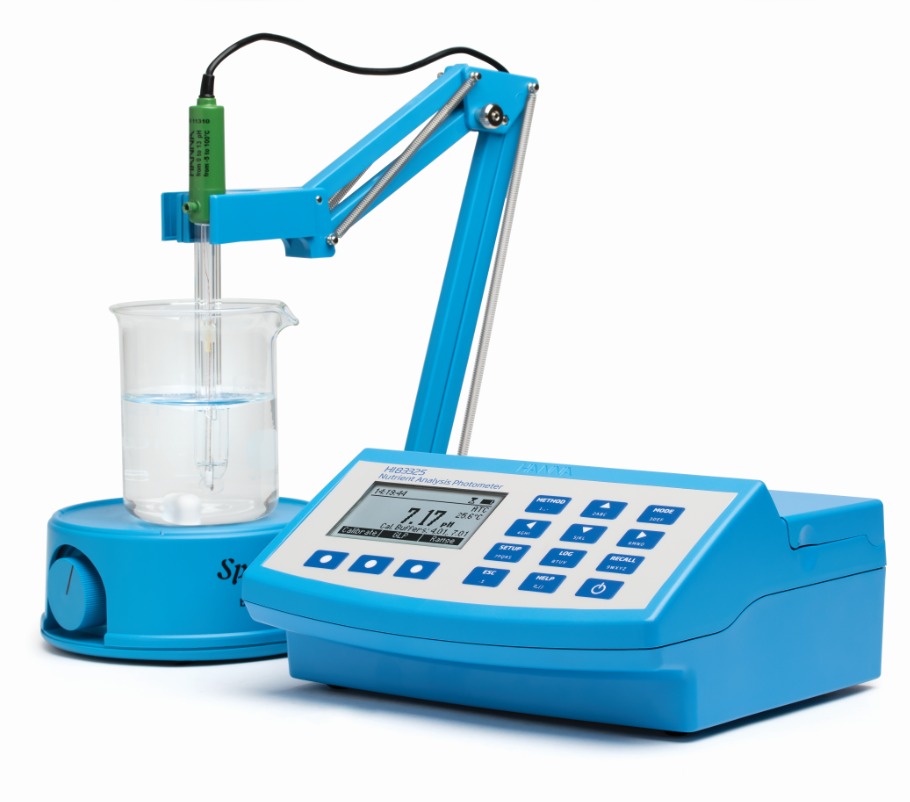

To ensure optimal growth and reproduction, it is crucial to maintain a consistent and comprehensive monitoring of plant nutrients.
Potassium, which is required in significant amounts, plays a crucial role in regulating water intake and enzymes. Calcium contributes to the strengthening of plant cell walls, providing protection against heat stress. Magnesium aids in enhancing the immune.
For pH measurement, the user has the convenience of utilizing a standard pH electrode through the digital pH electrode input.
- Advanced optical system with brighter, long-lasting LED light source
- Built-in reaction timer for photometric measurements
- Displayed units of measurement plus chemical form
- Conversion of results at the push of a button
- Measurement of pH and temperature with one probe
- Good Laboratory Practice (GLP) – calibration information including date, time, buffers used, offset and slope for traceability
- CAL check alerts the user to potential problems during the calibration process
- Data logging – up to 1000 photometric and pH readings can be stored.
- Recorded readings can be quickly and easily transferred to a flash drive or computer. Data is exported as a .CSV file for use with spreadsheet programs.
HI801
Spectrophotometer Iris
The HI801 IRIS spectrophotometer is a sophisticated and user-friendly device that enables the measurement of all wavelengths within the visible light spectrum.
Customize your methods, conduct a wide range of measurements, and ensure the accuracy of your tests with the HI801 Iris spectrophotometer.
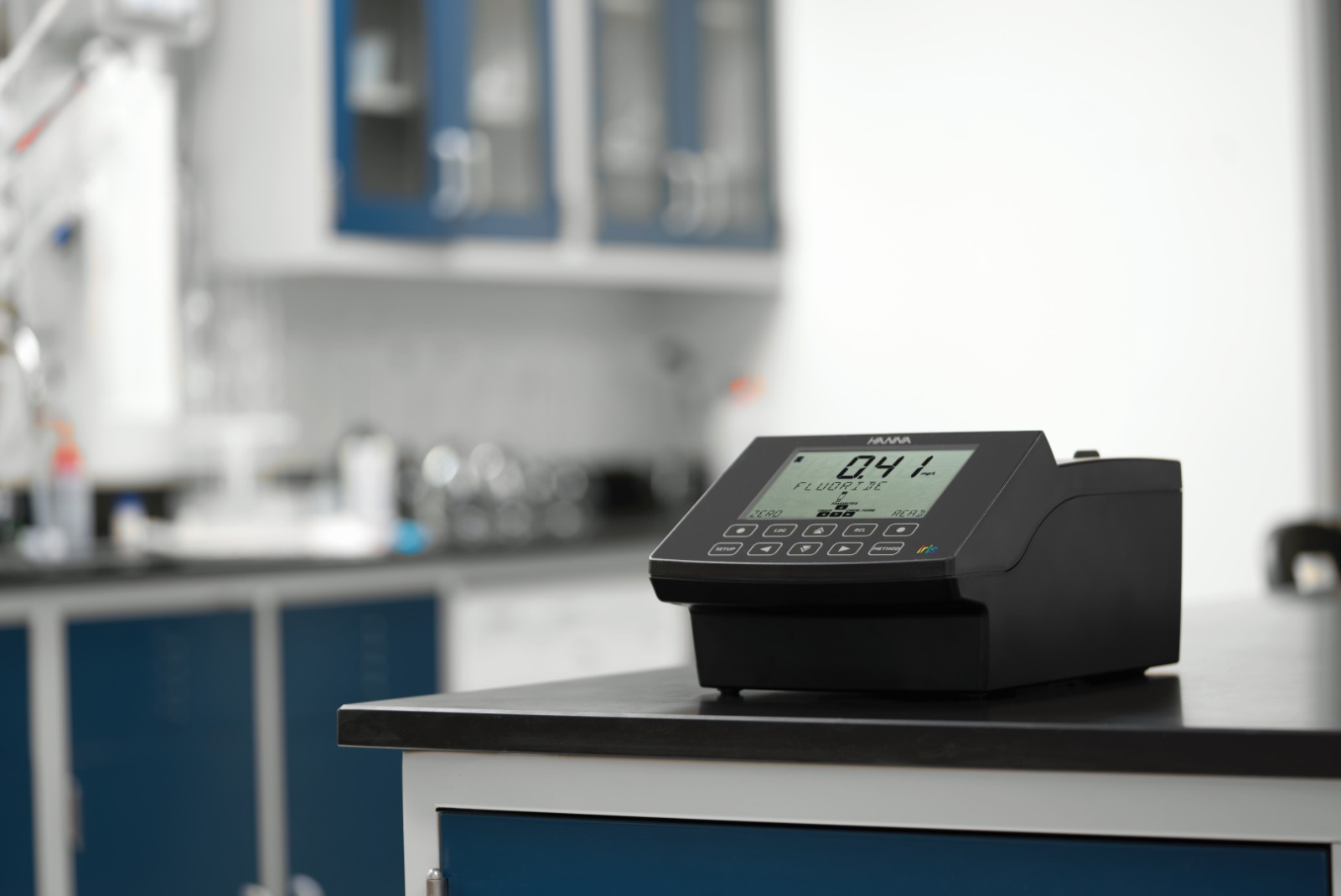

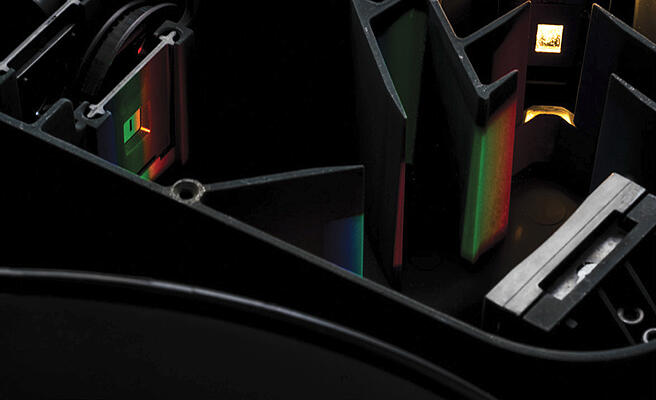

With a precise wavelength selection spanning from 340 nm to 900 nm, the HI801 IRIS Spectrophotometer ensures complete adherence to methods and the level of accuracy necessary in various industries, including professional laboratories, water treatment plants, wineries and more.
The optical system of the HI801 IRIS is meticulously designed and of high quality, guaranteeing consistent and precise results, regardless of the throughput.
You can personalize your experience with customization options that include various cuvette shapes and sizes, as well as the ability to create custom calibration curves and methods.
Video tutorial:
Nitrate measurement procedure
Have questions?
Contact a Hanna Technical Specialist at info@hannaservice.eu or using our contact form.
SOURCES:
Pardossi et al, 2011



